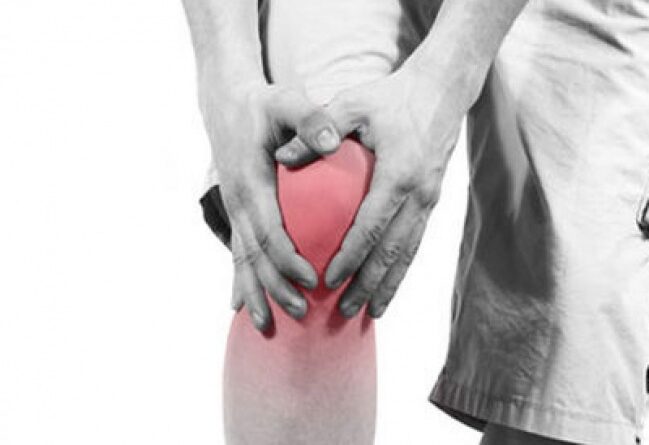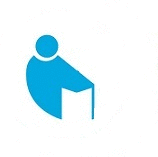
Knee pain
Knee pain is a common complaint that affects people of all ages. Knee pain may be the result of an injury, such as a ruptured ligament or torn cartilage. Medical conditions — including arthritis, gout and infections — also can cause knee pain.
Many types of minor knee pain respond well to self-care measures. Physical therapy and knee braces also can help relieve knee pain. In some cases, however, your knee may require surgical repair.
Symptoms
The location and severity of knee pain may vary, depending on the cause of the problem. Signs and symptoms that sometimes accompany knee pain include:
- Swelling and stiffness
- Redness and warmth to the touch
- Weakness or instability
- Popping or crunching noises
- Inability to fully straighten the knee
Causes
Knee pain can be caused by injuries, mechanical problems, types of arthritis and other problems.
Injuries
A knee injury can affect any of the ligaments, tendons or fluid-filled sacs (bursae) that surround your knee joint as well as the bones, cartilage and ligaments that form the joint itself. Some of the more common knee injuries include:
- ACL injury.An ACL injury is a tear of the anterior cruciate ligament (ACL) — one of four ligaments that connect your shinbone to your thighbone. An ACL injury is particularly common in people who play basketball, soccer or other sports that require sudden changes in direction.
- The bones of the knee, including the kneecap (patella), can be broken during motor vehicle collisions or falls. People whose bones have been weakened by osteoporosis can sometimes sustain a knee fracture simply by stepping wrong.
- Torn meniscus.The meniscus is formed of tough, rubbery cartilage and acts as a shock absorber between your shinbone and thighbone. It can be torn if you suddenly twist your knee while bearing weight on it.
- Knee bursitis.Some knee injuries cause inflammation in the bursae, the small sacs of fluid that cushion the outside of your knee joint so that tendons and ligaments glide smoothly over the joint.
- Patellar tendinitis.Tendinitis is irritation and inflammation of one or more tendons — the thick, fibrous tissues that attach muscles to bones. Runners, skiers, cyclists, and those involved in jumping sports and activities may develop inflammation in the patellar tendon, which connects the quadriceps muscle on the front of the thigh to the shinbone.
Mechanical problems
Some examples of mechanical problems that can cause knee pain include:
- Loose body.Sometimes injury or degeneration of bone or cartilage can cause a piece of bone or cartilage to break off and float in the joint space. This may not create any problems unless the loose body interferes with knee joint movement, in which case the effect is something like a pencil caught in a door hinge.
- Iliotibial band syndrome.This occurs when the tough band of tissue that extends from the outside of your hip to the outside of your knee (iliotibial band) becomes so tight that it rubs against the outer portion of your femur. Distance runners and cyclists are especially susceptible to iliotibial band syndrome.
- Dislocated kneecap.This occurs when the triangular bone (patella) that covers the front of your knee slips out of place, usually to the outside of your knee. In some cases, the kneecap may stay displaced and you’ll be able to see the dislocation.
- Hip or foot pain.If you have hip or foot pain, you may change the way you walk to spare these painful joints. But this altered gait can place more stress on your knee joint. In some cases, problems in the hip or foot can cause knee pain.
Types of arthritis
More than 100 different types of arthritis exist. The varieties most likely to affect the knee include:
- Sometimes called degenerative arthritis, osteoarthritis is the most common type of arthritis. It’s a wear-and-tear condition that occurs when the cartilage in your knee deteriorates with use and age.
- Rheumatoid arthritis.The most debilitating form of arthritis, rheumatoid arthritis is an autoimmune condition that can affect almost any joint in your body, including your knees. Although rheumatoid arthritis is a chronic disease, it tends to vary in severity and may even come and go.
- This type of arthritis occurs when uric acid crystals build up in the joint. While gout most commonly affects the big toe, it can also occur in the knee.
- Often mistaken for gout, pseudogout is caused by calcium-containing crystals that develop in the joint fluid. Knees are the most common joint affected by pseudogout.
- Septic arthritis.Sometimes your knee joint can become infected, leading to swelling, pain and redness. Septic arthritis often occurs with a fever, and there’s usually no trauma before the onset of pain. Septic arthritis can quickly cause extensive damage to the knee cartilage. If you have knee pain with any of these symptoms, see your doctor right away.
Treatment
Treatments will vary, depending upon what exactly is causing your knee pain.
At Alimran Medical Center, we may recommend any of the following treatments
Medications
Your doctor may prescribe medications to help relieve pain and to treat underlying conditions, such as rheumatoid arthritis or gout.
Therapy
Strengthening the muscles around your knee will make it more stable. Your doctor may recommend physical therapy or different types of strengthening exercises based on the specific condition that is causing your pain.
If you are physically active or practice a sport, you may need exercises to correct movement patterns that may be affecting your knees and to establish good technique during your sport or activity. Exercises to improve your flexibility and balance also are important.
Arch supports, sometimes with wedges on one side of the heel, can help to shift pressure away from the side of the knee most affected by osteoarthritis. In certain conditions, different types of braces may be used to help protect and support the knee joint.
Injections
In some cases, your doctor may suggest injecting medications or other substances directly into your joint. Examples include:
- Injections of a corticosteroid drug into your knee joint may help reduce the symptoms of an arthritis flare and provide pain relief that may last a few months. These injections aren’t effective in all cases.
- Hyaluronic acid.A thick fluid, similar to the fluid that naturally lubricates joints, hyaluronic acid can be injected into your knee to improve mobility and ease pain. Although study results have been mixed about the effectiveness of this treatment, relief from one or a series of shots may last as long as six months.
- Platelet-rich plasma (PRP).PRP contains a concentration of many different growth factors that appear to reduce inflammation and promote healing. These types of injections tend to work better in people whose knee pain is caused by tendon tears, sprains or injury.
Regenerative medicine treatment (Prolotherapy)
- Electrical stimulation
- Short and long wave
- Laser therapy
- Ultrasonic therapy
- Magnatic therapy
- Exercises
Chiropractic
